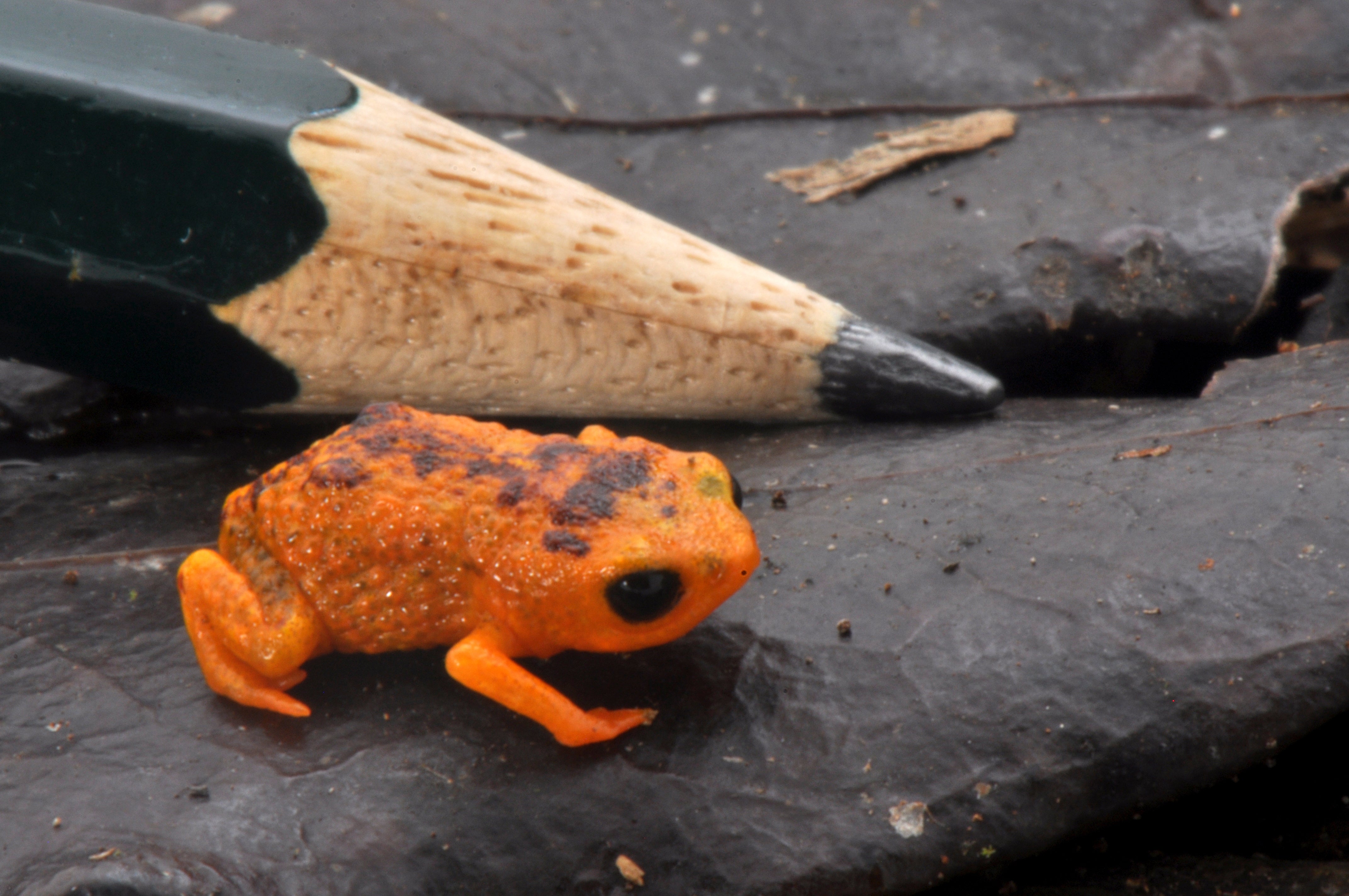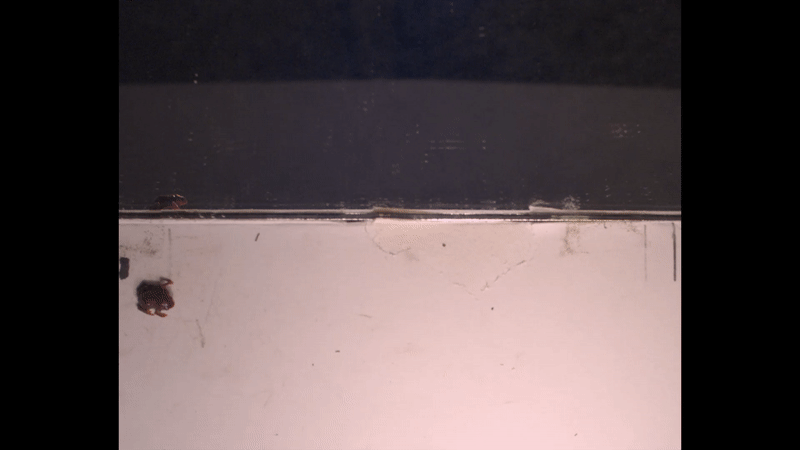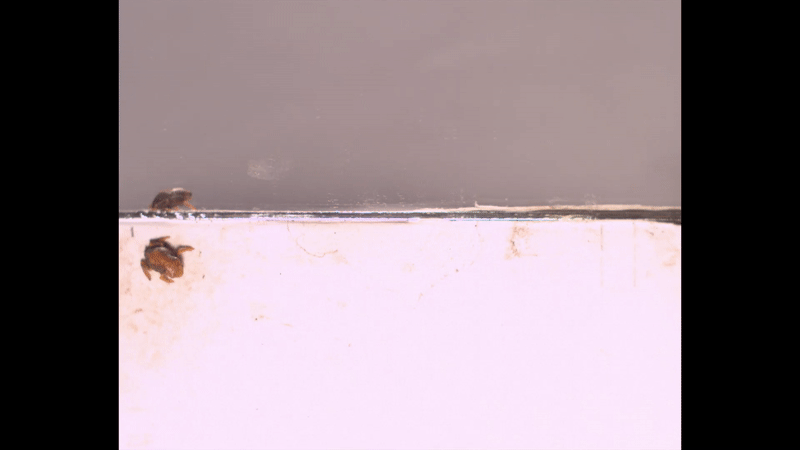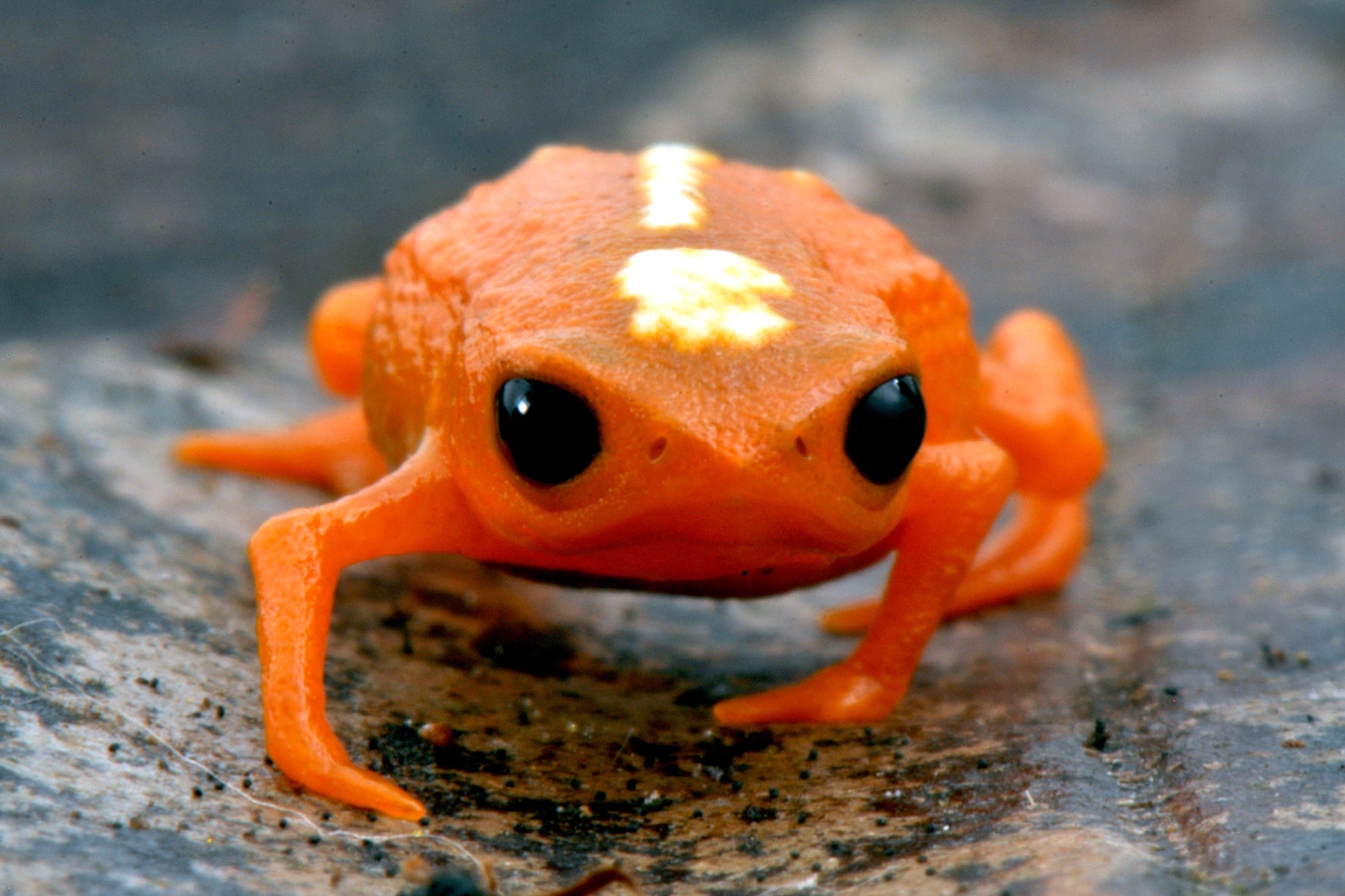Get out your smallest violin — or maybe your biggest — for the petite frogs whose miniature ear structures hinder their ability to hop, one of the defining characteristics of frogs.
The frogs are of the genus Brachycephalus, a group of small amphibians in Brazil also known as pumpkin toadlets. They’re actually decent at jumping upward; it’s the coming down that’s disastrous. The pumpkin toadlets are simply unable to control their landings. A team of researchers recently looked into the faulty gymnastics of these frogs, and their findings are published today in Science Advances.
Because of the size of the frogs’ vestibular system — the structures within the ear that govern balance in vertebrates — the frogs get totally disoriented in midair, causing them to awkwardly crash land with every hop.

“We propose that the unusual landing behaviour of pumpkin toadlets results from the small size of their semicircular canals, which are used to detect angular acceleration,” said paper co-author Richard Essner, a herpetologist at Southern Illinois University Edwardsville, in an email to Gizmodo. “We think that without the necessary vestibular feedback, they remain in their launch posture rather than folding up their hindlimbs in mid-air like other frogs.”
In flight, the frogs with constrained vestibular systems couldn’t keep their noses down in flight, and would pitch upward until they hit the ground, outstretched hind legs first. (In the paper, the researchers posit that the outstretched legs are probably the frog’s way of reducing its rotation in flight, keeping it from making an even more awkward landing.) The frogs landed on their backs in more than one-third of the jumping trials, in spite of their outstretched legs.
Essner said that only one other known group of frogs — the leiopelmatids of New Zealand — has similarly graceless landings. When animals move, a fluid in the inner ear called endolymph sloshes around with angular acceleration, tickling receptors that allow creatures to stay balanced and spatially oriented. The team posits that the toadlets’ ear canals are so small that friction between the endolymph and the walls of the ear reduces their sensitivity to angular acceleration. Imagine jumping off a diving board and not being able to sense which way you’re going or how fast.

The researchers made CT scans of the inner ears of 147 frog species, including several Brachycephalus species. They determined that miniaturized frogs have the smallest semicircular canals of any known adult vertebrates.
Thais Condez, a herpetologist at Carleton University in Canada who was unaffiliated with the new research, told Gizmodo in an email that Brachycephalus are “very small and secretive organisms,” and noted that anatomical differences within the genus may come to light with more scrutiny of the animals’ inner ears.
Though you may think of hopping as one of the most fundamentally froggy traits, it’s not always an amphibian’s way of getting from A to B. “Brachycephalus are some of the most ambulatory of frogs. They really are walking frogs,” Mark Scherz said in a video call. Scherz is the curator of herpetology at the Natural History Museum of Denmark and was unaffiliated with the new research. “And as you can see from the videos, they’re miserable at jumping.”

Scherz studies miniaturized frogs (as well as small squamates) from Madagascar, including three species named Mini mum, Mini scule, and Mini ature. Those species — while teeny — do not show the same clumsiness in the air.
On the contrary, Scherz said, some frogs in the petite family Microhylidae can jump about 20 times their body length. A human that could do that would be able to jump about 30.48 m with each hop.
Scherz noted that such small creatures have decreased vagility — the ability to move freely. Having a smaller body makes going for distance more difficult, which means the frogs are less likely to mix and mingle with genetically different frogs. So when things get smaller, you tend to have more speciation — numerous miniaturized species.
But why would evolution do Brachycephalus so dirty, and bestow the genus an adaptation that is as confounding as it is endearing? “As soon as you start seeing major costs to [a trait], the fact that it exists does suggest that it must be adaptive in some way,” Scherz said.

In 2017, a different team of researchers found that two species within Brachycephalus are insensitive to their own vocalisations — an indication that evolution is also pulling strings regarding the genus’s auditory abilities.
Because the animals mostly move by walking slowly along the ground, Essner’s team suggests that they likely use the wayward hops as a means of escaping predators. Scherz noted that many predators rely on sight to catch prey; when Brachycephalus fall back to ground, they can lie still for up to 30 minutes — keeping their legs stretched out and sometimes remaining on their backs. Unmoving on the forest floor, the frogs look very much a part of the leaf litter they inhabit.
Thus, Essner’s team thinks the animals use the ungainly leaps as a defence mechanism. In lieu of athletic ability, they rely on camouflage. They’re the spitting image of perseverance: Knowing they’ll make a crash landing each time, the frogs’ survival is all about playing the long game.
